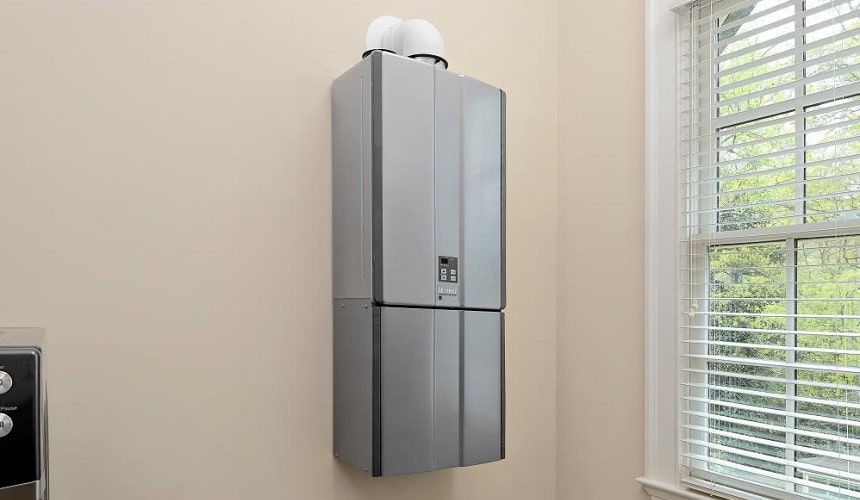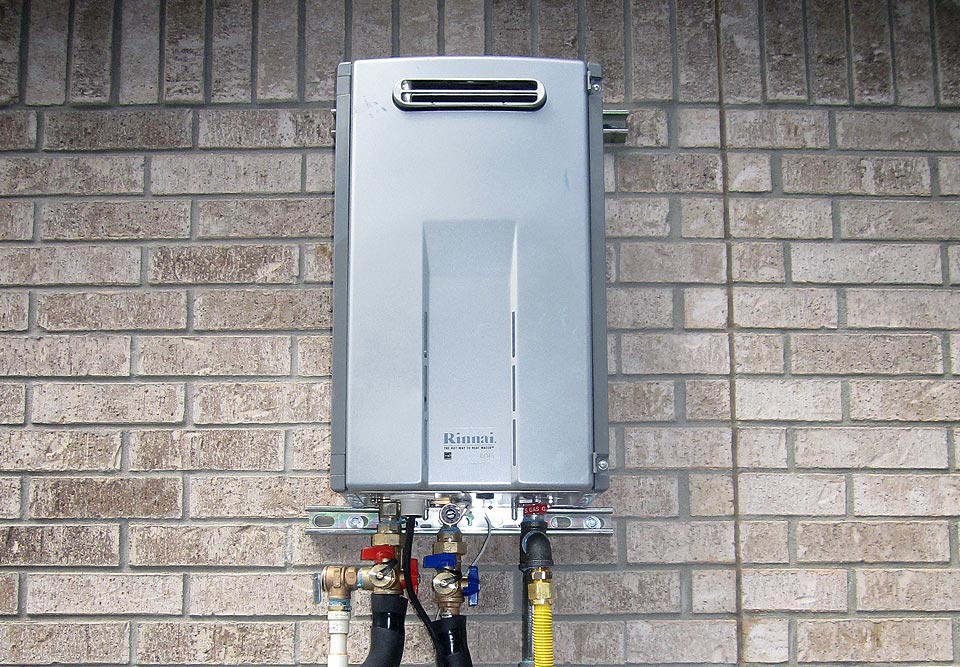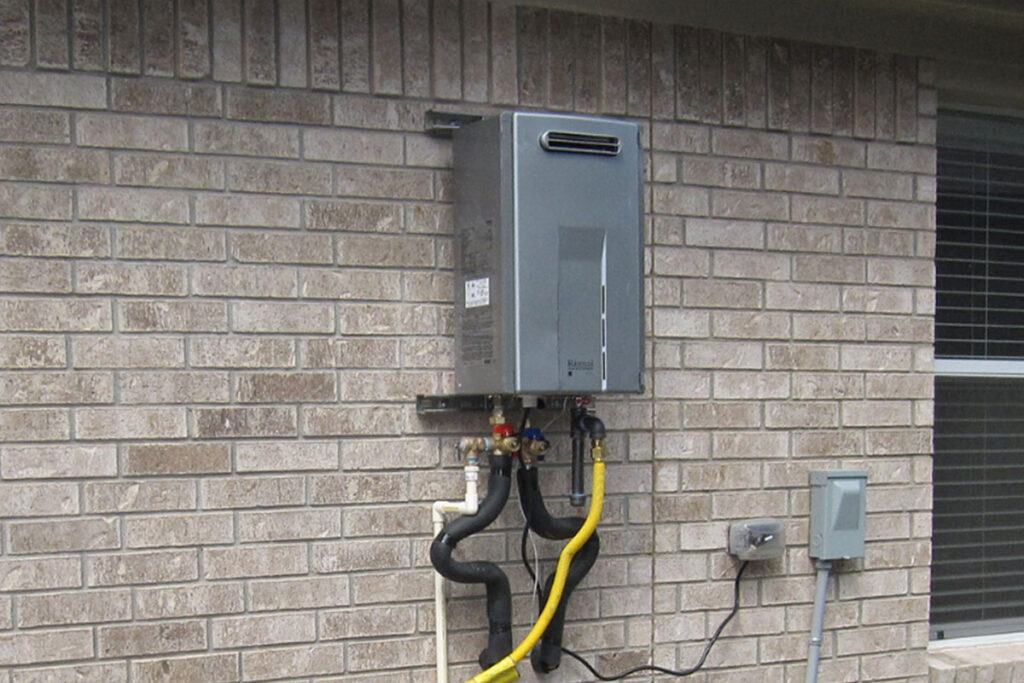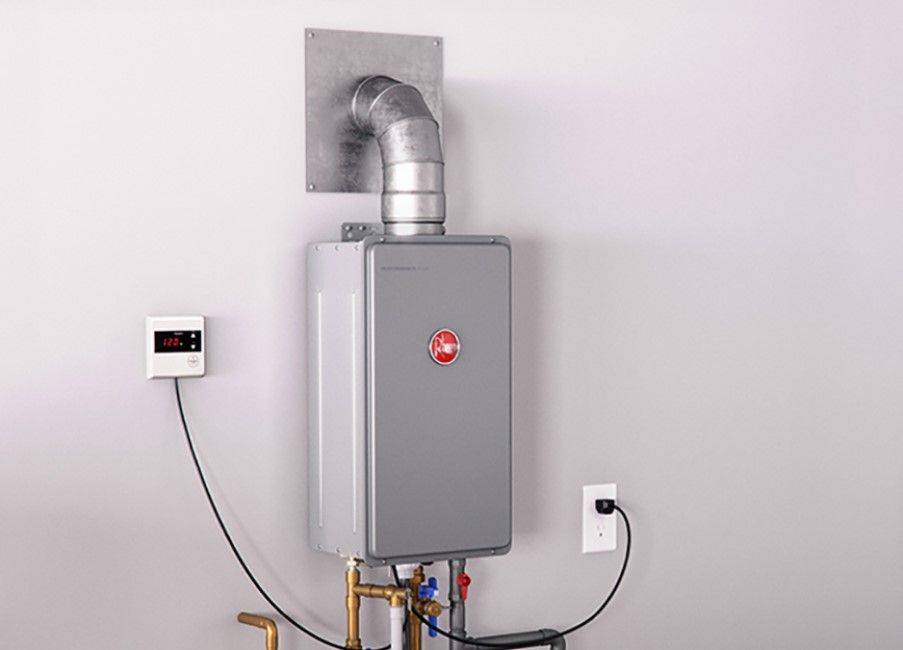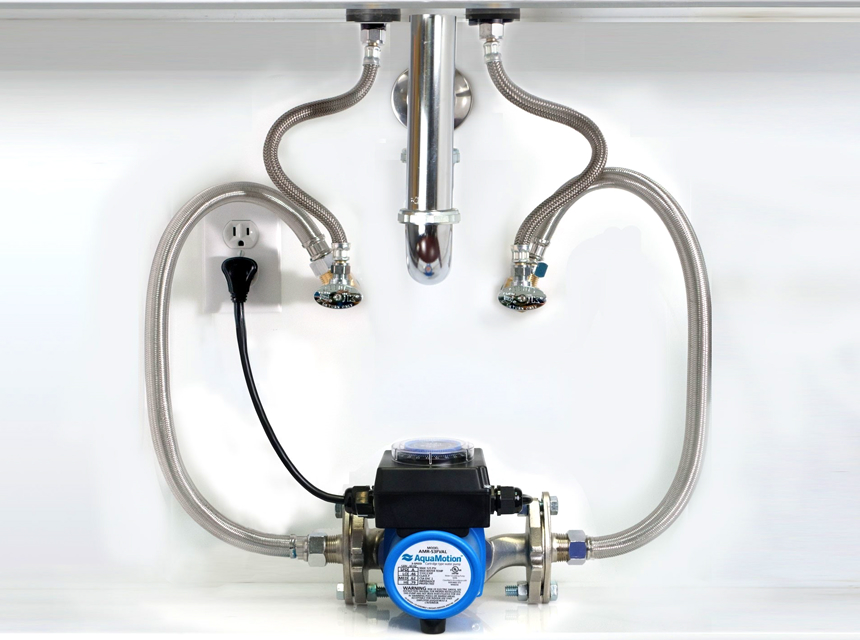

If you’re an avid outdoorsman, there’re lots of luxuries you’ll need to learn how to occasionally live without. Some of them include air conditioning, a plush bed, and a TV. While a water heater was among the luxuries outdoorsmen used to live without in the past, the story has changed with the invention of portable water heaters. With the best portable water heater, life in the outdoors has just become more comfortable.
With that said, this article aims to introduce to you the best portable water heaters around. Of course, we realize that lots of people may struggle to pick the right model, hence, the need for this guide. To facilitate our selection, we considered some essential features. The first of them is weight, which is important as you don’t want to add a bulky unit to your already heavy luggage. We also considered the temperature range, which determines how hot the water will be. Some other factors we considered are type, dimensions, and water pressure.
Typically, we spent tons of hours consulting numerous sources for the creation of this guide. Apart from ensuring that the article is maximally detailed, we’ve also done everything to make it easy for readers to read. Below this paragraph, you’ll find a comparison table, which gives you an idea of what each model is capable of. Then, you will find our detailed reviews of all the selected products, before finally landing in our buying guide.
More features: lightweight, installation hardware pack, flame failure device, anti-freezing protection and over heating sensor
If you want a portable water heater that runs on propane, then this model from Camplux is just what you need.
Due to the design, this model can be carried around with impressive ease. As a propane gas heater, it uses as little energy as possible to heat up your water. If you have a family on the go, or you often travel with the need to have hot water, then you should consider this model.
Another exciting thing about this model is that it comes with lithium-ion batteries that can help get it running.
Any model that is meant for outdoor use must be portable, and that is what you get weith this model. With it, you can travel around at will and still have hot water when you need it. It features a convenient handle and compact size. It also weighs just 11 pounds.
The Camplux offers a flowrate of 1.32 gallons per minute. While this is quite low, especially when compared with other more expensive units, it ensures that you enjoy hot water for a long time.
The model comes with the accessories that you need for efficient use. You get a pipe and gas regulator. All parts of this model are CSA approved, which means that it is safe for you to use.
Installation is easy too. You do not have to source for the hardware for installation since all you need already comes with the package. Using the 2D batteries, you can use this heater even without electricity.
Overall, this portable unit is something to get if you are travelling to the woods, or you want something in the garden.
It is highly reliable and comes at a good price.
More features: inbuilt stainless folding handle; electronic ignition
Apart from being reputable for its production of tankless water heaters, Camplux is a manufacturer that is also renowned for its portable stoves, grills, and electric water heaters. One of their most recent inventions, the BD158, is a typical example of the company’s incredible dedication to perfection. With its ability to produce up to 1.58 gallons of hot water every minute, along with the included shower head that allows you to take a shower whenever you’re in the outdoors, this product is the ideal camping water heater.
Furthermore, the water heater burns as much as 41,000 BTU per hour, and has a maximum temperature rise of 114.8 degrees Fahrenheit and a minimum temperature of 46.4 degrees Fahrenheit. It also comes with some unique features which include flame failure device, combustion protection, oxygen depletion sensors, and anti-freezing protection. And it is effortless to store and transport, thanks to a big handle built into the top of the unit. Its lightweight nature also aids the fact that it is easy to store and transport. The unit weighs a minuscule 15.4 pounds.
Despite sporting a simple design, it’s also aesthetically pleasing. It comes with many performance-improving accessories, including a three-setting shower head, a shower hose, two garden hoses, a water tape, a gas inlet connector, and a CSA-approved gas hose and regulator. The included gas regulator allows you to connect it to any propane gas, regardless of its size. When it comes to cons, we didn’t really find any apart from reports from some users that it’s not suitable for long work.
More features: includes 2 “D” cell batteries for electronic ignition; connects to any standard garden hose
If you are on a budget and you’re looking for something that can provide you with maximum value for money, then look no further than the Eccotemp L5 Tankless Water Heater. Apart from being incredibly easy to use, this budget-friendly product from Eccotemp has a great, portable design. Impressively, you can adjust the water temperature and the water flow with the aid of the on and off switch and the manual knobs built into the unit.
Furthermore, it doesn’t need electricity for ignition as it utilizes a stainless steel igniter. Moreover, the water heater works with excellent pressure, which ranges from 20 to 80 PSI. It’s powered by liquid propane and works with a stainless steel hose, which allows you to use it for a wide range of outdoor functions such as washing your boat, car, dogs, horse, taking shower, and a lot more.
For the achievement of superior cleaning results, you can also connect the water heater to a pressure washer. And since the water heater runs on batteries, it is elementary to use it in places where there is no electricity. While it doesn’t have an automatic shut-off, it is still safe to use.
More features: can be shelf, wall, or floor mounted
Bosch is a company that has garnered some reputation in the water heater industry, and the Bosch ES4 Tronic 3000 Electric Water heater shows exactly why. With this product, you are guaranteed to have access to heated water whenever you want it. This space-saving mini tank from Bosch is compact and lightweight and designed to work either autonomously or in conjunction with the water heating system of your house, and can even be used as an under sink water heater. Indeed, this excellent unit is a true portable water heater, particularly suitable for campers and hikers.
With a recovery rate of 6.8 GPH at 90 degrees Fahrenheit, this unit promises to reduce the amount of time for which you have to wait for hot water to start running. In a way to guarantee optimum energy efficiency, the manufacturer has provided the system with thick foam insulation. Not only that, but the tank is also made with premium glass-lined material for maximum durability. In fact, every other component of the system is backed by a two-year limited warranty, which indicates how confident the manufacturer is in the product.
Sporting an attractive and sleek design, this unit can easily blend in with pretty much any kind of home and RV décor. And since it has a compact design that makes it ideal for small spaces, it can easily come to the aid of people with small kitchens. On top of that, it comes at a very affordable price, making it exceptionally appealing. While it’s been reported by many customers that the unit leaks a bit, that’s pretty much the only drawback you may find on this unit.
More features: high water temperature protection over 167 °F; low water pressure startup (2.5 PSI)
The Gasland BE158 Water Heater is another solid choice if you are after a compact unit to take along on your camping trips. Since it’s a portable model, it can be used for a variety of purposes, including RV-ing, camping, and other on-the-go needs. And since it’s made in two colors – silver and white – users have two color options to choose from, which is excellent. Like our top pick, it is also capable of 1.58 GPM of hot water per minute, which is impressive for a unit of this size.
Moving on, the Gasland BE158 is capable of delivering hot water on demand with up to 41,000 BTUs. Weighing 15.5 pounds, this model is incredibly lightweight in nature, which makes it easy to install. And like some other models we have reviewed, it also doesn’t run on electricity – it’s instead powered by two D cell batteries. However, it has to be connected to a propane tank, since it doesn’t run on electricity, which is rather convenient and used in most gas tankless water heaters. While the one-year limited warranty it comes with is considered short in some quarters, we think it still delivers a lot for the money.
The main burner and propane water heater exchanger are also engineered with state-of-the-art combustion technology, which helps reduce burning noise and gas consumption. Some users claim that the installation instructions aren’t detailed enough, so we’d take that as the second of the two little downsides we found.
More features: one step installation, can be used at 6000 feet altitude
This Hotaitai Portable Heater is a 1.58GPM heater that uses propane. It comes with a digital panel and is tankless while providing endless instant hot water. This system is easy to set up in your RV and other outdoor uses.
This is a portable propane water heater that can be used outdoors but not indoors. The water heater ensures a hot shower, especially in caravans, on campsites, in holiday homes, or the garden. This heating system can be used at 6000 feet altitude.
However, it wouldn’t provide enough hot water for multiple people’s uses, for example, for a family of three. It is ideal for one person or maybe two. The device has a good water pressure and supplies up to 95 gallons per hour.
The propane gas water heater is a great asset where there is no power connection. Since it can be operated with liquefied gas from bottles, it is often used when camping on caravans. Possible uses for this outdoor device include on a campsite, for heating the pool, whirlpool, a sauna shower in the garden, on the terrace for the dogs, and more.
More features:cold-rolled steel, automatic ignition and flameout modes
The VIVOHOME Outdoor Portable Tankless Water Heater is an efficient way to get hot water anywhere. This unit is powered with propane and it’s designed to conform with US and Canadian standards. The maximum temperature is set at 149ºF which is ideal for many tasks but it isn’t high enough to scald yourself accidentally. This is an easy unit to use and understand with only two seasonal modes (summer and winter) to select. The design is light and flexible, it’s easy to carry and available in white or red.
This tankless water heater has a flow rate of 6L/min, which equates to an output of around 1.6 gallons per minute. But, the energy consumption is low, which means that you can save money on your energy heating costs without compromising on performance. The incoming water pressure must be in the 3-145 PSI range for the heater to work. If the water pressure is lower than 3 PSI the heater will not ignite and hot water will not be produced. It’s also important to install this water heater in a fully vertical position in a well ventilated location.
In terms of safety, the VIVOHOME Outdoor Portable Tankless Water Heater has four separation protection systems, they are: flameout, anti-dry, overheating and antifreeze protection. The heater ignites automatically when you turn on the hot water to save energy and off again to improve safety when you’re done. This is a great product if you need hot water for your next camping trip and for washing your car and boat outdoors at home.
The fact that you’re experienced buying regular water heaters doesn’t mean you know how to choose portable models as well. With that in mind, we have designed this buying guide to help equip you with all the knowledge you need when choosing the best portable water heater for your needs.
What are the benefits of a portable water heater? You may be wondering. Well, we have decided to answer your questions in the following paragraphs:
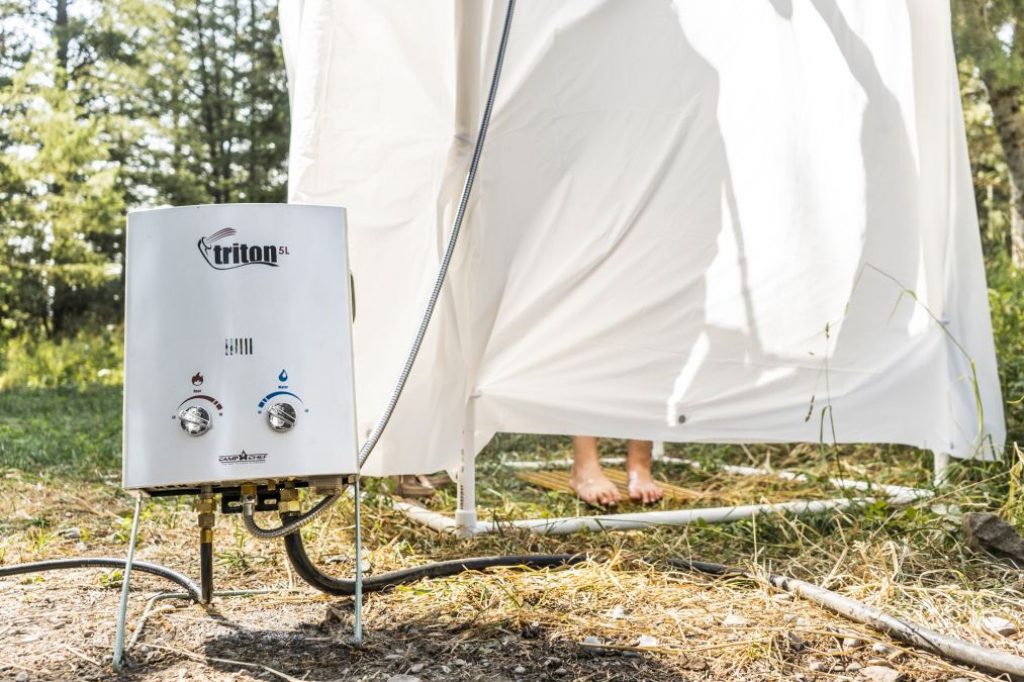
The number one benefit of portable water heaters is that their small size makes them space-saving. This is particularly handy when you have limited space or when you want to use them in your RV. Moreover, they are usually tankless, meaning they heat water immediately it passes. This allows them to be space-saving.
When you are in the campsite, you will most probably not have the luxury of electricity supply. These heaters can operate while requiring minimal energy, making it easy to enjoy hot water without too much hassle,.
Safety is the first priority as regards water heaters, which is why it is important to note that it’s probably the first thing you must consider before paying. Of course, due to their compact nature and the way they are meticulously constructed to perform in small spaces, portable water heaters are always a symbol of safety.
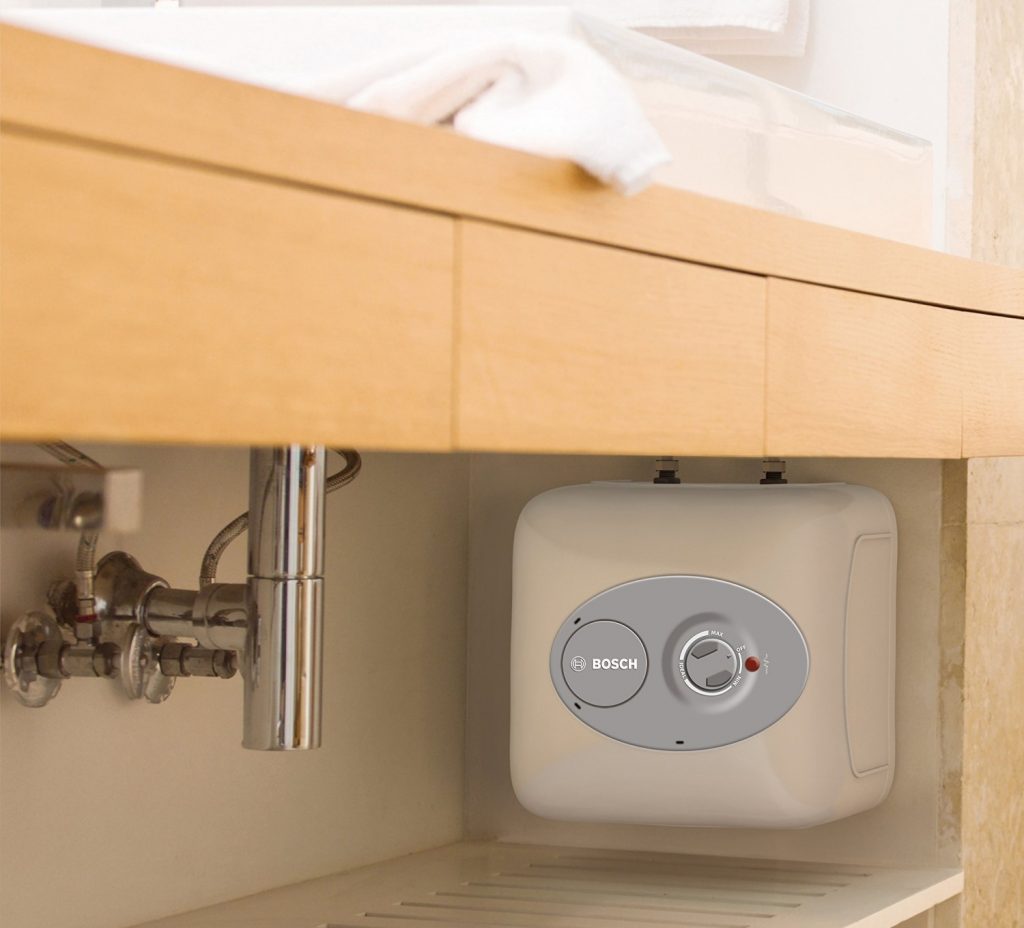
When trying to choose between the different types of water heaters, consider where and how often you are going to use your appliance. If you’re looking for a portable model to be used outdoors mainly, a propane water heater is an ideal solution. It requires a propane cylinder to operate as well as a couple of batteries for ignition. Such heaters are easy to use anywhere making them truly portable; plus, propane heats the water very fast. You must keep an eye on your propane supplies, however, in order not to run out of fuel just when you least need it.
Electric models, on the other hand, don’t need anything except a power socket. However, they are usually not advised to be used outdoors to avoid short circuit. They are a nice solution for an RV or your home bathroom, though.
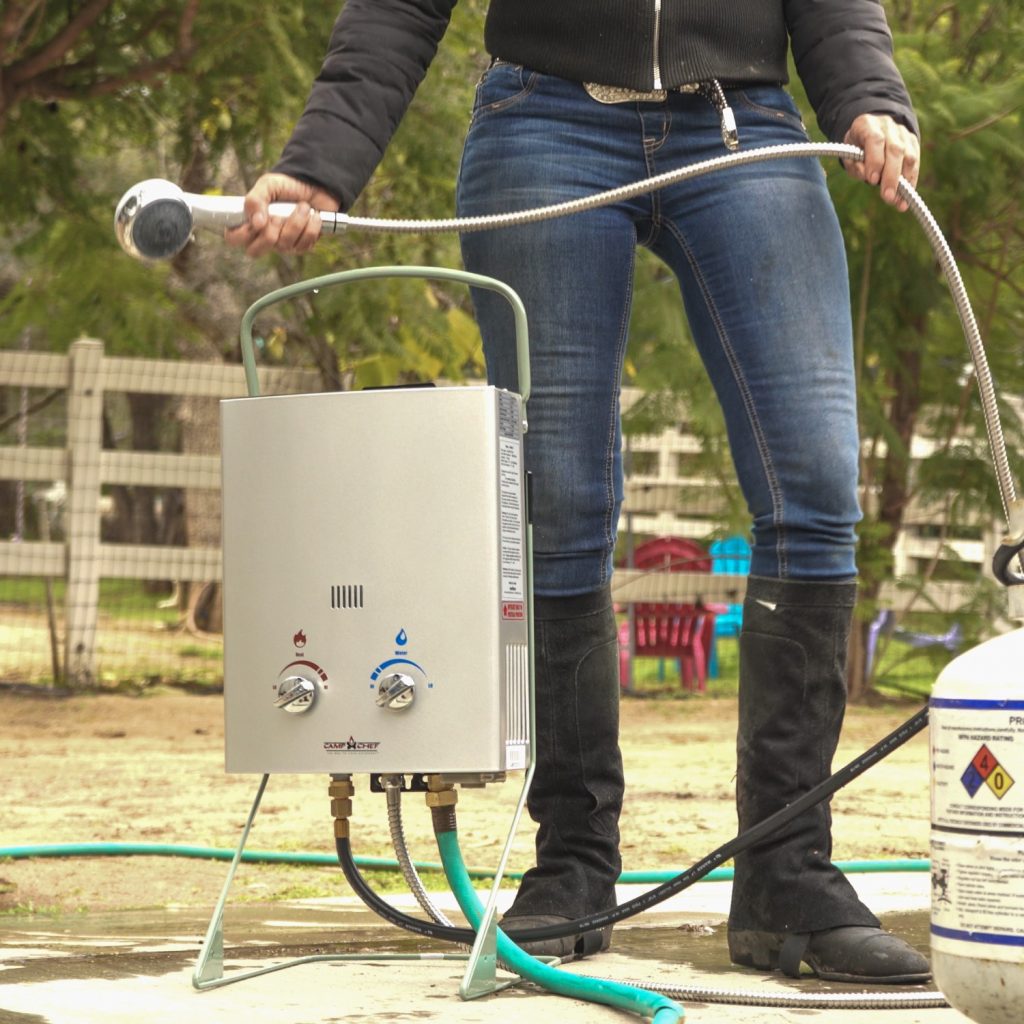
Depending on what you want to be using the water heater for, you also need to consider the operating pressure before buying your new appliance.
The operating pressure determines how fast the unit is able to produce hot water, so it’s really an essential consideration, especially for people who are always on the move as they don’t have much time to waste.
The water heater’s performance depends significantly on its temperature range. Obviously, you need a model with a higher range since you don’t know where the outdoors may take you. It could a camp between snow-covered mountains or a beach. Therefore, you need a water heater that can be used easily in either situation, so we encourage you to find a model with a higher temperature range like the Eccotemp L5 Portable Tankless Water Heater Shower.
Since portable water heaters are actually aimed at people with limited space, then it’s logical to consider the dimensions before buying. While most portable models should be portable enough to either fit your space or your backpack, you still need to check this specification before you make your final decision.
This factor is a bit related to the one right above. Portable water heaters are primarily designed for campers and people who are always on the go, so it’s important to consider its weight before shelling your money on it. Is it lightweight enough to be carried conveniently on your camping trips? If you’re an outdoorsman, we recommend you to go for lightweight units like the Eccotemp L5 Portable Tankless Water Heater Shower and the Gasland BE158 water heater.
The warranty is another crucial consideration for peace-of-mind-seeking buyers. If the company is offering a long warranty, it means that they’re confident in their invention.
If any problem arises, you can easily contact the manufacturer and your unit will either be replaced or repaired. In order to be eligible, make sure you have met the criteria and satisfied the specified terms and conditions.
To ensure you get the highest value for your money, you may also consider some extra features. For more versatility, you may look at a model with an included shower hose. You may also want a unit that has a handle if you know you will likely be carrying your unit often around.
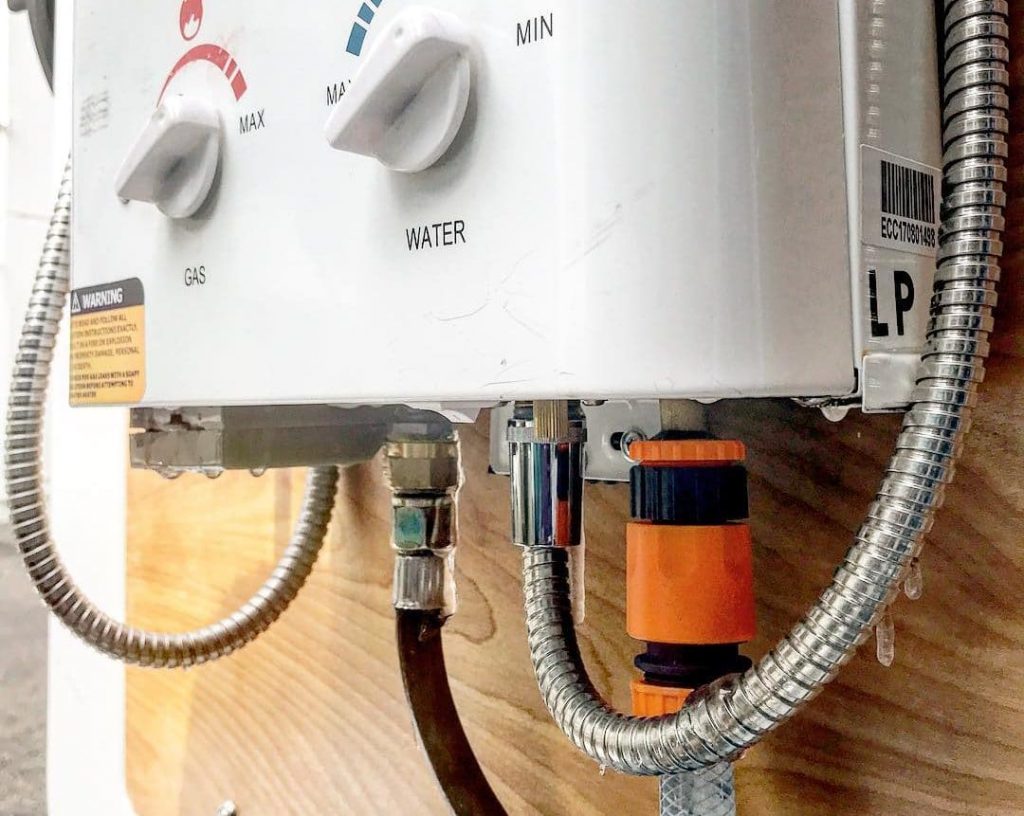
The default setting of a lot of water heaters is above 130 degrees Fahrenheit. Most experts often recommend users to keep it lower at around 115 to 120 degrees. With this lower setting, the chances of your unit getting overheated will reduce, and you will also save around five percent on your electricity bill.
The temperature and pressure relief valve is a safety valve that is usually built into water heaters. If your water heater continues heating water after reaching the set temperature, the built-up pressure could cause an explosion. To prevent this, this valve gets rid of excess heat and pressure to keep your appliance operating safely. The valve can be inspected in three simple steps
You also have to flush the tank of your water heater every year to prevent mineral sediment deposits from building up as they could destroy the steel. To flush the tank, simply turn off the supply of the water, power, or gas to the tank. Then open the pressure release valve and a hot water tap, before using a bucket and a hose to drain the water from the heater’s tank until there is no sediment again.
You will have to empty your tank entirely if there is a lot of sediment in it. Afterward, turn the supply of the cold water to the tank on and allow the water to turn through it until it’s clear. Continue flushing the tank until no sediment is left.
Wrapping your water heater in an insulating blanket, and also insulating the exposed pipes, is a way to lower energy usage by reducing the amount of heat loss. Also, this can extend the life of your appliance by reducing the demand for it.
We’ve reached the end of this guide and its verdict time. To be honest, it’s challenging separating the top models on this list, as any of the top three models would have been a worthy Editor’s Choice. However, our top pick goes to the Camplux BW211, primarily due to its easy installation and the light weight.
Taking the second place right after our best portable water heater is the CAMPLUX ENJOY OUTDOOR LIFE BD158, primarily due to its suitability for many purposes, powerful performance and electronic ignition.
Our third pick is the Eccotemp L5 Portable Tankless Water Heater Shower . With its affordable price and possibility to connect it to any standard garden hose.
